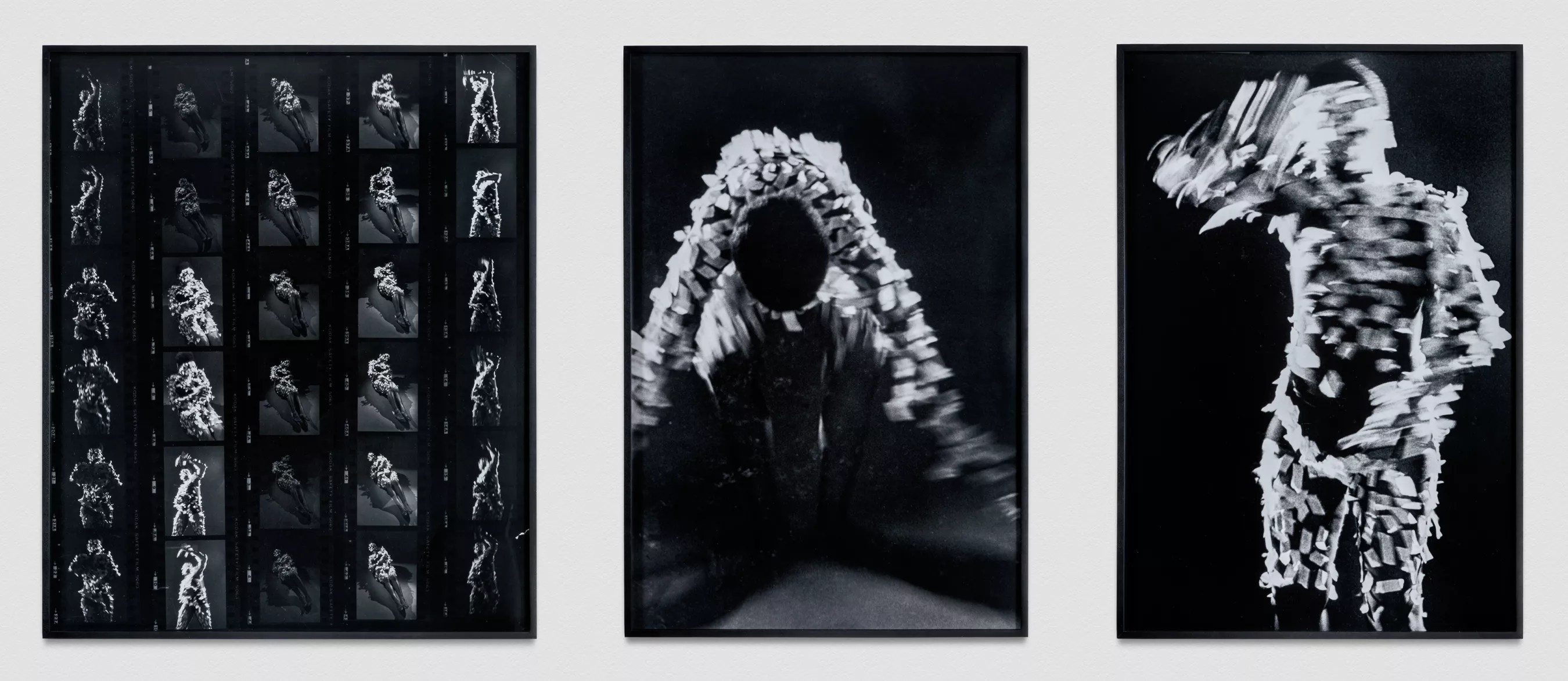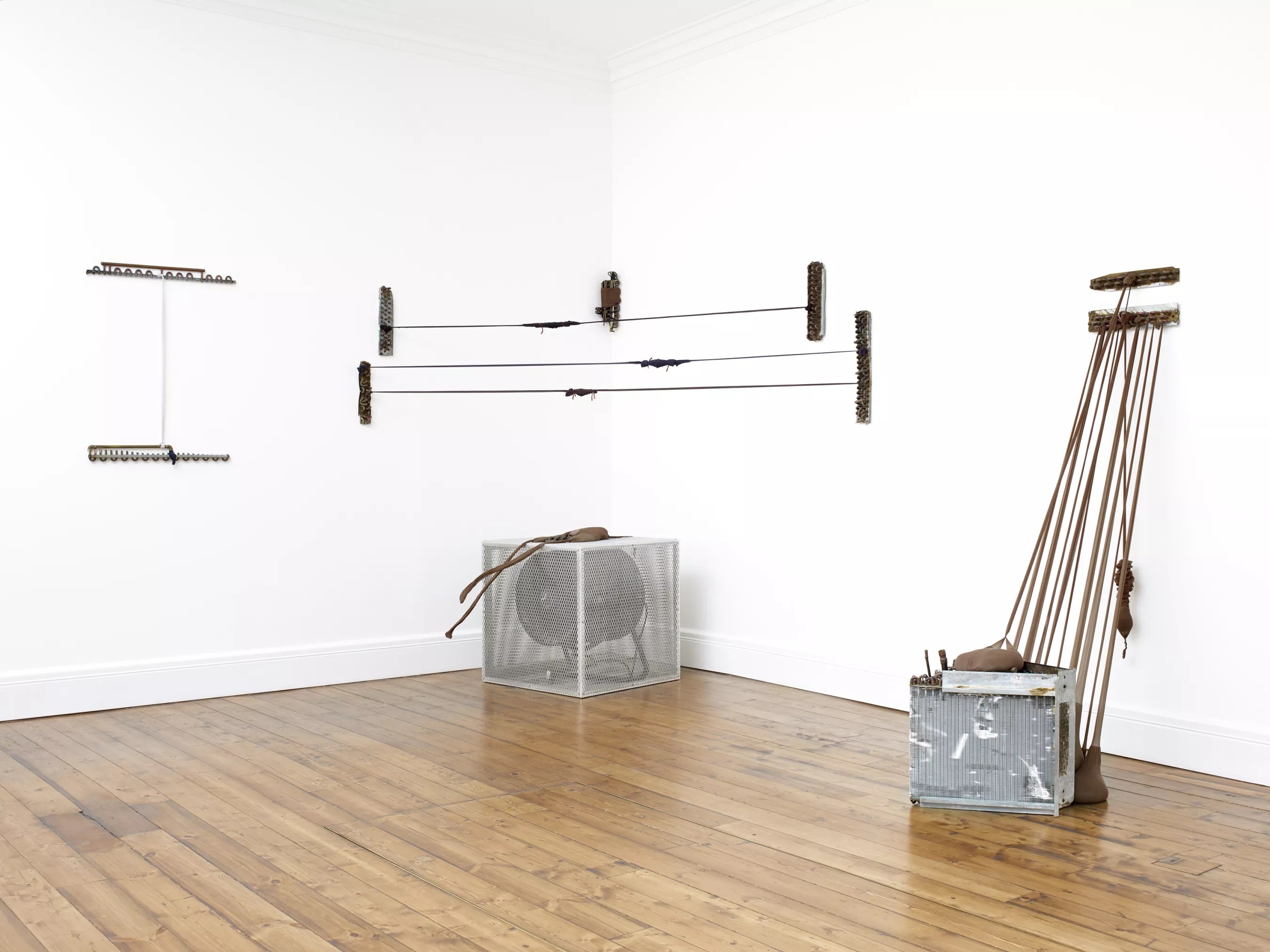

Audio By Carbonatix
Having spent the past forty-plus years working conceptually, internationally famous Colorado artist Senga Nengudi is the subject of an important traveling exhibition, Senga Nengudi: Topologies, which opens December 13 at the Denver Art Museum.
Topologies includes many of Nengudi’s signature pieces, which often fall between performance art and sculpture. The exhibition, curated by Stephanie Weber, originated at the Lenbachhaus in Munich and went on to the Museu de Arte di SÁ£o Paulo in Brazil – all before arriving at the DAM.
DAM director Christoph Heinrich acknowledges the irony of the show originating in Munich before arriving in Nengudi’s home state. “Senga Nengudi is an internationally recognized artist who has been around forty years? Fifty years? But she is living right next door, in Colorado Springs, for the last thirty years,” he says. “So on the one hand, it was our reaching overseas, and on the other, just talking to a neighbor.”
In Denver, Modern and Contemporary art curator Rebecca Hart is hosting the show, and she’s enlisted Nengudi to add insight into her work.
Nengudi was born in Chicago in 1943 and moved as a young child to southern California with her then-recently widowed mother. She became interested in art and dance at a young age, attended California State University, Los Angeles. In 1965, she worked as an intern at the Watts Towers Art Center during the time that Noah Purifoy was the director. Purifoy, who had been a co-founder of the WTAC, had earlier created his seminal sculptures and installations using the charred and broken debris left by the Watts riots. His goal was to find community in the wake of the riots.
Nengudi graduated in 1967 and then went to Japan for a year, where she became engrossed in Japanese culture, notably being exposed to kabuki and butoh at Tokyo’s Waseda University. Those theatrical forms would influence her own performance art. She also discovered the Gutai Art Association, and though she never met the members, their example in creating experimental theater, performances and sculpture inspired her. She returned to the United States and completed her MA at Cal State LA in 1971 with a focus on sculpture.

While still in California, she emerged as part of the Black Art Movement of the 1970s. Nengudi applied her knowledge of dance and visual art by melding them into performances with artists from the legendary Studio Z, a collective of like-minded African-American artists interested in found materials and performance art that included such luminaries as David Hammons and Maren Hassinger. Photos of Nengudi’s performance “Ceremony for Freeway Fets,” in which the Studio Z crew are the performers, are included in the show at the DAM.

Throughout the ’70s, Nengudi divided her time between California and New York City, where she had moved a few years after leaving Cal State LA to be in the center of the contemporary-art world. Notable works from the 1970s include her “Water Composition” series, in which she filled transparent heat-sealed vinyl shapes with colored water to suggest shapeshifting. One of these, near the start of the show, demonstrates that her early ideas are still vanguard even today.
Her fabric “spirits,” which she hung in the streets of Harlem, also address ever-changing shapes in motion. They have an ephemeral quality – the water evaporates, the fabric shreds – all of which come together to convey the human condition.
These ideas about mutability would inform her well-known “R.S.V.P.” series, which she debuted in 1975. Using pantyhose, Nengudi created sculptures that served as settings for live interactive performances, some of which were filmed or photographed. The pantyhose were sometimes knotted or wrung into tight twists or stretched into high tension. Some were filled with sand. These sculptures, at times wall-mounted and at other times going from floor to wall, evoke the idea of the human body rather than being a representation of it. And the body is Nengudi’s, as a Black woman and mother bearing the marks of childbirth. In more recent years, she’s reprised her “R.S.V.P.” series, replacing maternal references with others that address aging.
Nengudi’s work is about the immediate experience – and not just her performances, which are time-limited by their nature, but even the sculptures, which are made of non-substantial materials. Many of her earlier pieces no longer exist except as recorded in photos or re-creations. The DAM show includes re-created pieces from the 1970s and documentary photos; the institution has acquired a photographic triptych, “Masked Taping,” for its permanent collection. The piece documents a performance from 1978-1979 in which a dancer’s body is covered in short strips of masking tape hanging like fringe.
In 1989, Nengudi moved to Colorado Springs. Over the past three decades, she has periodically taught visual art and performance at the University of Colorado Colorado Springs. Her later work has continued the ideas she first laid out in the ’70s, as is the case with her “A.C.Q.” sculpture series, which was shown at the Venice Biennale in 2017. The DAM has also acquired one of these, “A.C.Q.I.,” a complex multi-part corner installation using found industrial elements linked by pantyhose. One of the elements is an old box fan that moves pantyhose attached on top; the machine stands in for the live performer from her older works.

Although Nengudi’s art is undeniably idiosyncratic and unique in vision, it has a formal affinity with the roughly contemporaneous body-related sculptures of Eva Hesse and, less so, the hanging felt sculptures of Robert Morris.
Curator Hart sees Nengudi’s oeuvre as being singularly focused on addressing the human body.
“For Senga, the body is not only the site of physical creation, but is also the source of political resistance exploring the themes of racial identity, womanhood, aging and endurance,” says Hart, who describes Nengudi’s pieces as “thought experiments that have come to life.”
Nengudi explains her creative vision through the exhibit’s title, Topologies. “A definition of topologies: the way in which constituent parts are integrated, interrelated or arranged,” she says. She describes how empty space is a component in this set of parts and, by implication, in her sculptures and performances: “You will see this played out in the show itself.”
Senga Nengudi: Topologies opens on Sunday, December 13 and runs through April 11. Access to the show is included in general admission, but you must have a timed ticket before arriving, as capacity is limited to 25 percent. Purchase tickets at denverartmuseum.org.